This is the Most Important Article I have ever Written
What they don't want you to know about the RCMP, the Hell's Angels, and serial killers.
In August of last year, I visited Vancouver, intending to do some reporting about the city’s worsening opiate crisis and the failure of its “harm reduction” approach to drug addiction.
In the course of this investigation, I learned some gruesome things about a series of horrific deaths of indigenous women. I dropped what I was doing and dedicated myself to digging deeper. What I found shocked.
Twenty years after serial killer Robert Pickton was arrested, nothing has changed in Canada’s Sin City. Psychopaths continue to prey upon vulnerable women, many of whom are indigenous. To make matters worse, the police seem more interested in covering up the crimes than in investigating them.
Don’t believe me? Read on…
Indigenous women are still being murdered in Vancouver, and the police are still covering it up
Four indigenous women have recently been found dead in Vancouver and two more are missing.
August 20th, 2022
Editorial Note: It is with heavy hearts that we publish this article, which is being simultaneously released on Real People’s Media. Be aware that the content of this article is highly triggering for any Indigenous person in Canada and is not appropriate for younger people. The analysis and opinions expressed in this article are those of the author. We are publishing this story with the intention that it will encourage others to continue the searching for justice and closure for the families of the murdered and missing Indigenous people across the country.
Real People’s Media would like to offer our condolences to all the families of missing and murdered Indigenous people, including those who have been named in this article. We do not intend to cause any further trauma or harm to the families of the victims by telling this story, and we offer our most sincere condolences to them. An independent, national, toll-free support call line established by the National Inquiry into Missing and Murdered Indigenous Women and Girls is available to provide support for anyone who requires assistance in dealing with trauma regarding this issue. Call 1-844-413-6649 at any time to seek help.
By Anton Bueckert
The car's on fire and there's no driver at the wheel
And the sewers are all muddied with a thousand lonely suicides
And a dark wind blows
The government is corrupt
And we're on so many drugs
With the radio on and the curtains drawn
We're trapped in the belly of this horrible machine
And the machine is bleeding to death
The sun has fallen down
And the billboards are all leering
And the flags are all dead at the top of their poles
It went like this:
The buildings tumbled in on themselves
Mothers clutching babies picked through the rubble
And pulled out their hair
The skyline was beautiful on fire
All twisted metal stretching upwards
Everything washed in a thin orange haze
I said: "kiss me, you're beautiful -
These are truly the last days"
- Dead Flag Blues (Godspeed You! Black Emperor)
In the heart of downtown Vancouver, there is a street called Hastings. If you start from the city’s gleaming financial district and walk eastwards, you will soon come to the Downtown Eastside, home to some of the most hardcore drug addicts anywhere in the world.

Between 1978 and 2001, at least 65 women disappeared from the downtown Eastside. Many were sex workers, drug addicts, or both. Many were Indigenous.
For years, the police ignored the disappearances, denying that the evidence suggested there was a serial killer at large. It was only after Vancouver’s missing women attracted international attention that the RCMP finally did something. They raided a Port Coquitlam pig farm and arrested a man named Robert Pickton. They then proceeded to pin almost every unsolved murder in Vancouver on him. Case closed, they claimed.
Recently, I visited Vancouver, where I conducted a series of interviews. My intention was to do some reporting on the opiate crisis, then get back to the bush.
I wasn’t prepared for what I discovered. In the course of my investigation, a friend of mine suggested that I speak with his wife, who works at a drop-in center for street-based sex workers.
The drop-in center is called WISH, the Women’s Information Safe House. The organization, started in 1993, offers services to some of Canada’s most vulnerable people, including hot meals, showers, syringes, condoms, and counseling services. It also provides a place for sex workers to share information about violent johns, known euphemistically as “bad dates.”
When I interviewed my friends wife, I learned that at least five women have turned up dead in recent months, four of whom were Indigenous. At least two other Indigenous women have recently gone missing. As of yet, no arrests have been made, and the police seem more interested in doing public relations than in finding the killers.
Given what I know about the lengths to which the police went to cover up the Pickton murders, I was extremely disturbed to learn that both police forces seem to be doing the exact same thing all over again.
Before we examine the evidence, I suggest that readers refresh their knowledge of the Pickton case, because this information is best understood within its historical context. CTV produced a documentary called The Pig Farm, and I highly recommend the Canadian True Crime podcast, which did a four-part series on the Pickton case, as well as the Vancouver True Crime podcast, which has gone even deeper into this case.
Extraordinary Claims Require Extraordinary Proof
I am given to the type of speculation that could easily be called conspiracy theory. It’s often said that extraordinary claims require extraordinary proof. Fair enough.
Let me state my extraordinary claim up front – the recent murders of Indigenous women were likely committed by a criminal network which has existed for decades. This criminal network included convicted serial killer Robert Pickton, his brother David Pickton, and members of the Hell’s Angels biker gang. I will now state my case and leave it to the reader to decide whether my reasoning is sound. If if I have failed to convince you, I welcome alternative explanations in the comments below. I would absolutely love to be wrong about this, and you would be doing me a service if you are able to relieve me of a false belief.
I realize that I’m being alarmist, but I’d rather ring a false alarm and be proven right than find out I’m right and regret not speaking up sooner. If I have made any errors, please let me know in the comments below, and I’ll post a correction. It is of vital importance to get this information out there now. Doing so could save lives. Failing to do could have tragic results.
With that disclaimer out of the way, let’s get down to brass tacks. Since April of this year, the bodies of five women have turned up in Vancouver.
April 22nd – Chelsea Poorman (Cree, from Saskatchewan) – 24 years old.
May 1st – Noelle O’Soup (last seen in Port Coquitlam) – 14 years old.
May 1st – Elma Enan – in her 30s.
May 2nd – Tatyanna Harrison (Surrey) – 20 years old.
July 30th – Kwem Manuel-Gottfriedson (Coquitlam) – 24 years old.
Caption: Mural in Vancouver announcing the discovery of Chelsea Poorman’s body.
Chelsea Poorman
The body of Chelsea Poorman, who had been missing for 18 months, was discovered outside a mansion in the ultra-rich neighbourhood of Shaughnessy on April 22nd of this year. When her body was found, she was missing three fingers and part of her skull. Despite this, the Vancouver Police Department ruled that there was “insufficient evidence to suggest that her death was the result of a crime.”
Unsurprisingly, her friends and family are unconvinced, and they’re not alone. The Union of B.C. Indian Chiefs and the Federation of Indigenous Nations have issued statements calling for the VPD to re-open the investigation into Chelsea’s death.
According to a Vancouver blog, Chelsea’s stepfather, Mike Kiernan, “traveled from Saskatoon to Vancouver in a van, which he covered in photographs and notices featuring Chelsea in hopes someone would contact him about her disappearance.”
“Kiernan has been clear in previous interviews with reporters that he is not happy with the VPD’s work on the investigation, saying he believes more attention would have been paid to finding his daughter if she weren’t Indigenous.”
After Chelsea was found, Kiernan “broke into the vacant house on whose property his daughter’s remains were discovered, where he said he found belongings that typically would have come from Chelsea’s purse.”

“There’s a lot of DNA evidence left there – a lot of stuff that can be investigated,” he said, noting he later told police about what he did. “They didn’t touch any of it, and just left it there.”
I have not been able to discover the name of the owner of the mansion, which is valued at 7 million dollars. According to all the articles that I’ve read, the house has been vacant for quite some time, and its owner does not live in Canada.
On July 25th, a Vancouver blog reported that “The RCMP has been asked to review the investigation conducted by the Vancouver Police Department into the disappearance and death of Chelsea Poorman.”
Personally, I don’t have the slightest confidence in the RCMP, so I’m guessing that this review will go nowhere. But the fact that the file is being reviewed does suggest that even members of the power structure think that the VPD’s handling of this case is suspicious.
In a strange twist, a realtor actually lost his license after tearing down posters advertising a vigil for Chelsea. Was he concerned that the posters would affect property values, or does he have something to hide?
According to Business in Vancouver, “Randy Vogel, a realtor now formerly with Macdonald Realty, is allegedly seen in a video posted to social media removing the posters from an area that appears to be near his Granville Street home.”
Following this, he was shamed on social media. His former employer posted: “We do not condone any inappropriate actions taken by any member of our community, and, in this instance, we took immediate action, and they are no longer with Macdonald Realty.”
He also resigned from the board of Cloverdale Paint, a company co-founded by his grandfather. The board issued a statement distancing themselves from him, saying “Cloverdale Paint promotes an inclusive and respectful workplace, and we do not tolerate actions that seek to exclude anyone from the rights, freedoms and equality that they deserve and are entitled to.”
Does it strike you a little strange that people are so eager to distance themselves from Vogel?
Vogel was even suspended by the Royal Yacht Club of Vancouver, where he was a fleet captain.
I wonder how many boats you need before you can call yourself a fleet captain.
Noelle O’Soup
The case of Noelle O’Soup is no less horrific. After disappearing from a Port Coquitlam group home in May of 2021, the 14-year-old girl’s body was found in one of the filthy SRO rooming houses that East Hastings is famous for.
The term SRO stands for Single Resident Occupancy, and is a euphemism for “rat-infested slum.”
The details of her death are extremely disturbing, and again show extreme police negligence. Apparently, the girl’s body was found decomposing under a pile of garbage in a hoarder’s apartment, along with the corpse of an woman in her 30s. And the story only gets stranger from here.
Apparently, police entered the apartment on February 23rd in order to remove the body of its tenant, a man in his 40s, who had apparently died of a drug overdose. For some reason, the apartment was not thoroughly searched, and the bodies of the two women were not discovered.
Residents of the building contacted the police on multiple occasions, trying to get them to enter the apartment, but their requests fell on deaf ears. The stench of rotting corpses permeated the building for months, but the police could not be persuaded to investigate. It was not police who found Noelle’s body, but cleaning staff.
In this case, the police are treating the deaths as suspicious, but no arrests have been made. The public has been told that “it is believed that Noelle and the woman died before the man.” The word on the street is that this man had been living in an apartment with two rotting corpses in it, possibly for months.
For some reason, the man’s name has not been released. According to his neighbours, he went by Kim, and was a Vietnamese national. For three months, the identity of the older female was not released, and very little information about her has been reported.
A few days ago, Global News reported that her name was Elma Enan, and she was in her 30s. The reporter noted that Elma was “the relative of a serving member of the Vancouver Police Department, according to several sources.”
On May 18, less than three weeks after the remains of O’Soup and Enan were recovered, the Office of the Police Complaint Commissioner launched a neglect of duty probe into the actions or inaction of a single Vancouver police officer, in connection to an alleged investigative blunder.
“The basis of the allegation relates to conduct surrounding attendance at a suite where three deceased individuals were ultimately located,” said a VPD spokesperson.
On July 13th, another Global News story quoted another VPD spokesperson stating that “the officer facing the investigation was a serving member, and that there had been no change in their duty status.”
Tatyanna Harrison
The body of yet another Indigenous woman, Tatyanna Harrison, turned up on a dry-docked yacht in Richmond, B.C. The cause of death was determined to be a fentanyl overdose, and was ruled “not suspicious.” She was 24 years old.
It’s worth noting that it has never been easier to kill someone by administering them a lethal dose of opiates. This is known on the street as a “hot shot.” For all we know, many of the overdoses on the Downtown Eastside could be homicides.
It’s quite mind-bending, actually, to think about the legality of it. If you sell drugs to someone with the intention of killing them, and they die, you’re guilty of murder, right? But where’s the proof? To an observer, the crime would be indistinguishable in all respects from a drug deal. In the age of Fentanyl, it’s never been easier to kill someone and make it look like an accident.
Pickton reputedly had his own version of the hot shot, which involved injecting his victims with anti-freeze. Just because someone died of a drug overdose doesn’t mean that they weren’t murdered.
Remember that.
Kwemcxenalqs Manuel-Gottfriedson
Kwemcxenalqs’s body was found inside inside a building near East Hastings, one block away from the SRO where Noelle’s corpse was found.
She was not known to frequent the Downtown Eastside, and was last seen in Coquitlam. Her phone’s last pinged location was the Astoria, a notorious SRO on Hastings Street.
Her death is under investigation.
Kiesha Boudreau
There is one more Indigenous woman who is missing, but her case is different from the others. The police are looking to arrest her because a warrant has been issued for her under the Mental Health Act, despite the fact that she has not been charged with a crime.
The Coquitlam RCMP are looking for her because she “may behave in a way that presents a risk to herself or the public.”
I know more than I want to about the Mental Health Act, and I can assure you that this is not at all normal anywhere in Canada, let alone in Vancouver. Psychosis is practically the norm on East Hastings, and thousands of people are engaged in a non-stop, 24/7 spree of extremely high-risk activity there. And they’re trying to arrest a grown adult for being crazy?
Something weird is going on here.
Historical context
The ugly truth is that both the VPD and the B.C. RCMP have a long history of ignoring crimes against Indigenous people. Worse still, they have a long history of actively sabotaging investigations into the cases of missing women.
If we are to be extremely charitable, perhaps we might say that the Vancouver police are lazy, apathetic, stupid, and negligent. But many people believe that there is something much uglier at work here.
To understand why, we’ve got to look at the Pickton case. Anyone saying that the police failed to catch the killer due to ineptitude is hopelessly naive, ignorant of the facts, or are simply lying. They didn’t catch Pickton because they weren’t trying to catch him. They must have had orders to look the other way. The question is – who gives the police orders? Because that’s who’s guilty.
On multiple occasions, the police received tips that a pig farmer named Willy Pickton might have something to do with the murders. Many sex workers had visited his property, which was located on the outskirts of Vancouver.
Robert Pickton owned the farm in Port Coquitlam, along with his brother David. The two were known associates of the Hell’s Angels, and David roped Robert into letting the gang use the farm as a chop shop, which Robert ended up running. Later, Pickton started a club house and music venue called Piggy’s Palace, which was frequented by off-duty police officers as well as gangsters, sex workers, drug dealers, and johns.
Robert Pickton was initially charged with the murders of 26 women, and was eventually convicted for the second-degree murders of six women. Technically, the other 20 murders remain unsolved.
Incidentally, Robert Pickton is not the only serial killer to hail from Port Coquitlam. Clifford Olson, who confessed to murdering 11 children and teenagers between the ages of 9 and 18 in the early 1980s, was also based there.
The evidence that the police knew that Pickton was a serial killer is overwhelming. Even an overview of the evidence to support this claim is beyond the scope of this article, so I’ll stick to just one example.
Ex-VPD detective Lori Shenher, who wrote a book about the Pickton case called That Lonely Section of Hell was assigned to the missing persons unit of the VPD in 1998. Within days, an informant had identified Pickton as a suspect. Within months, she was convinced that Pickton was the prime suspect, and pushed her superiors to issue a warrant to search his farm. She contacted the Coquitlam RCMP, because Pickton’s farm was in their jurisdiction, but they failed to take any action. The killings continued.
After being transferred to another unit, she leaked information to a reporter at the Vancouver Sun in 2001. By that time, the VPD investigation into the disappearance had completely been abandoned.
According to the Literary Review of Canada, “Pickton’s arrest in 2002 accelerated her psychological and physical collapse, and the onset of the symptoms of PTSD. She had no doubt that Pickton could have been arrested sooner and the lives of some women could have been saved.”
Eventually, international attention caused the police to take action. Vancouver was becoming notorious internationally as a den of sleaze and iniquity, which presumably led developers to worry that the city’s tolerant attitude towards the murder of Indigenous women might damage the Vancouver brand. Wouldn’t want a little thing like genocide to get in the way of them property values, would you?
After the U.S. TV show “America’s Most Wanted” produced an episode about Vancouver’s missing women, the police finally executed a search warrant on the Port Coquitlam pig farm. They found mountains of evidence, including DNA evidence linked to 33 different people.
Robert Pickton was charged with 26 counts of first-degree murder, and was eventually convicted of 6 counts of second-degree murder.
Not only did the police fail to charge anyone else for the murders, Canada’s mainstream media got in on the cover-up, serving up a steaming pile of “lone wolf” bullshit.
Gory details of Pickton’s gruesome crimes would fuel sensationalistic news stories for years, but most Canadians remain unaware that Pickton had many accomplices, and that the police let him get away with murder for years.
Lest anyone think I’m suggesting that Pickton is innocent – I’m not. But I believe that he was a member of a crime ring which included cops and criminals, and that some of his partners-in-crime remain at large.
Many people believe that Robert Pickton was in the business of body disposal. As Hollywood revealed to us in the 2000 gangster movie Snatch, an effective way to dispose of a corpse is to feed it to pigs. Perhaps the reason that he was protected by both bikers and cops for so long was because he was useful to them.
It’s worth noting that Pickton did actually write a whole book in which he portrays himself as a “Fall Guy”, insinuating that the Hell’s Angels and his brother were the ones responsible for the deaths. The book, which was smuggled out of the prison by another inmate, is now hard-to-find, and I haven’t been able to locate a version online.
If you spend any amount of time examining the evidence, you will conclude that Pickton definitely had collaborators. According to evidence presented at trial, two women enticed multiple sex workers back to the farm so that Pickton could torture and kill them. Their names were Gina Houston and Dinah Taylor. Yet both got off scot-free. And why was David Pickton never arrested? He lived at the pig farm, for Christ’s sake!
To make matters worse, the police actually want to prevent these crimes from being solved in the future.
In 2020, when (almost) everyone was distracted by COVID, the RCMP sought authorization to destroy evidence related to the Pickton investigation.
In an unusual move, Pickton told the court that he had only been informed of the RCMP application “at the very last minute” and that his lawyer had misled him.
The convicted murderer told B.C. Supreme Court Justice James Williams that it was “very important” for the court evidence not to be discarded or destroyed, not for his sake, but for the sake of the victims’ families that deserve the truth.
He said that the exhibits were also needed to “finally” prosecute those who are truly responsible for “these unwarranted crimes against humanity.”
“So please, let’s keep an open mind and a level head to all these court proceedings because in all fairness it’s to find the truth and protect the innocent.”
Think about that. The RCMP wants to destroy the evidence, not Pickton. Then ask yourself this: Who has more motive to destroy evidence – the guilty or the innocent?
Of course, one party being guilty doesn’t make the other innocent. There are no good guys here.
But what does it say about Canada if a convicted serial killer seems more interested in truth and justice than the supposed upholders of justice do?
Truly, we live in the last days.
Real People’s Media has received some funding to do further reporting and investigation into Missing and Murdered Indigenous Women. If you are a writer, researcher, or story-teller who is interested in working with our team on this project, please email realpeoplesmedia@gmail.com to get in touch with us. Let it known that if in fact organized crime groups and state policing organizations are involved in the disappearance and murder of Indigenous people, Real People’s Media is dedicated to the exposure and destruction of their organizations.






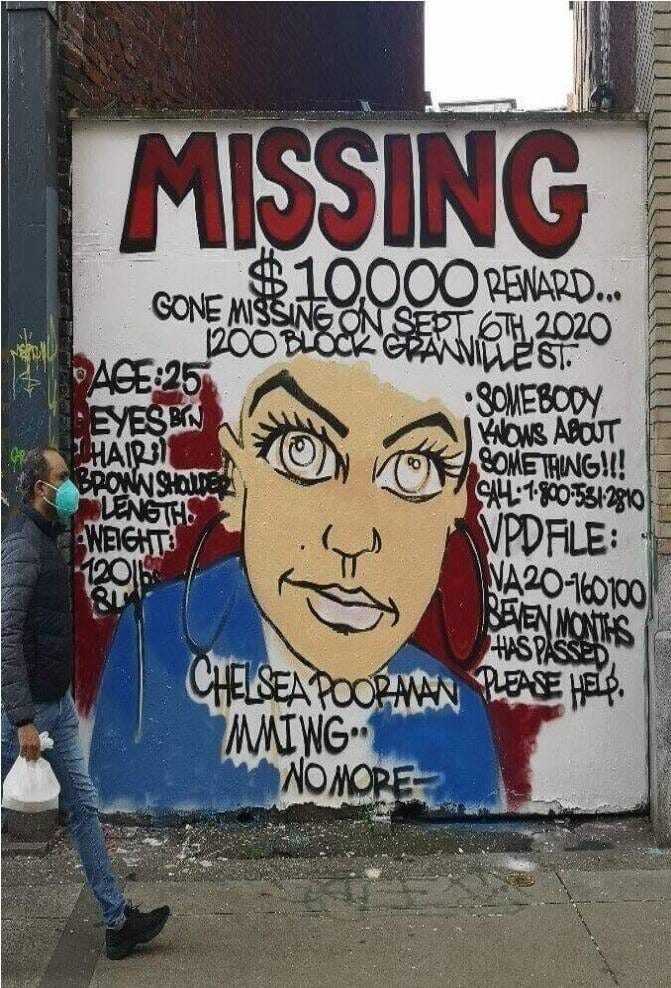
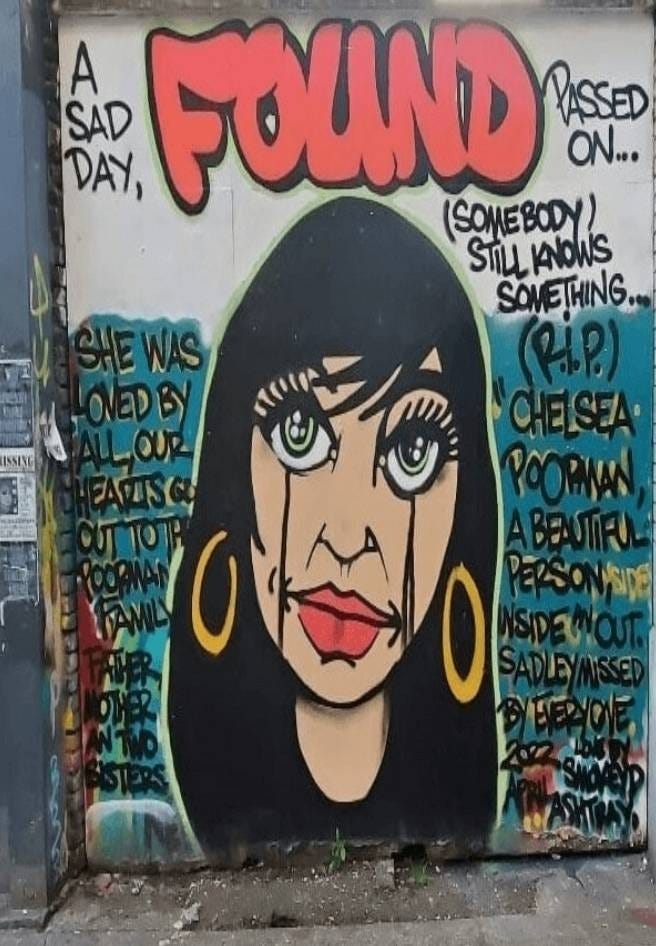
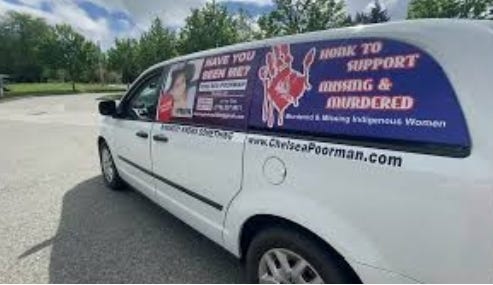
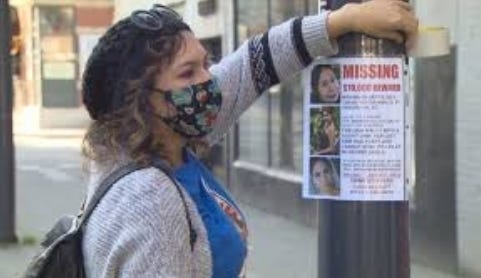
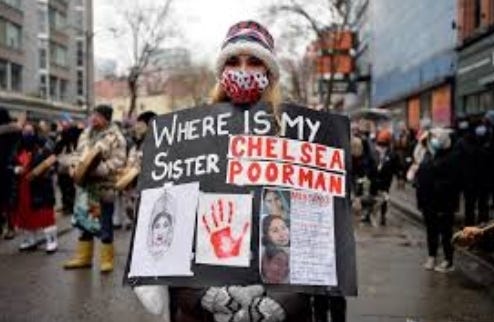
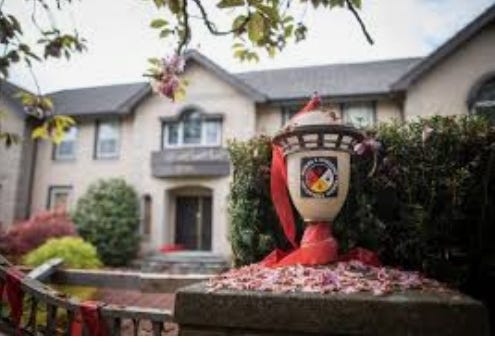

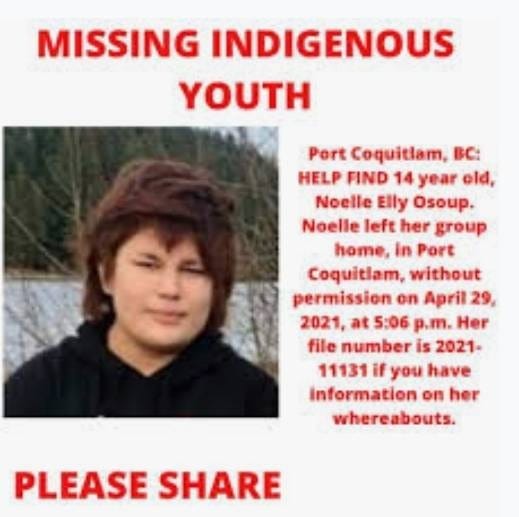
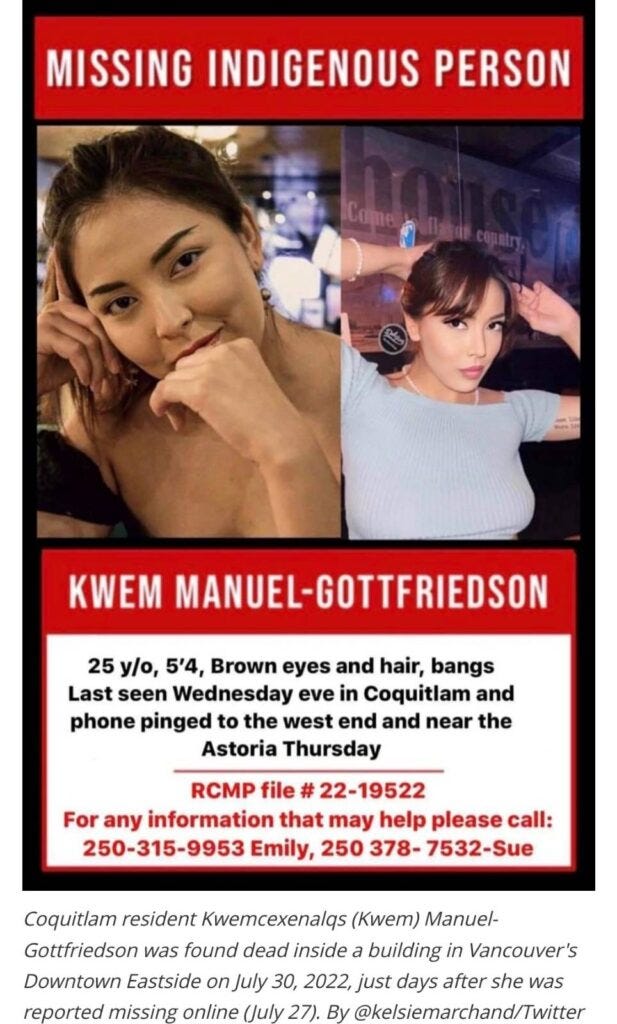


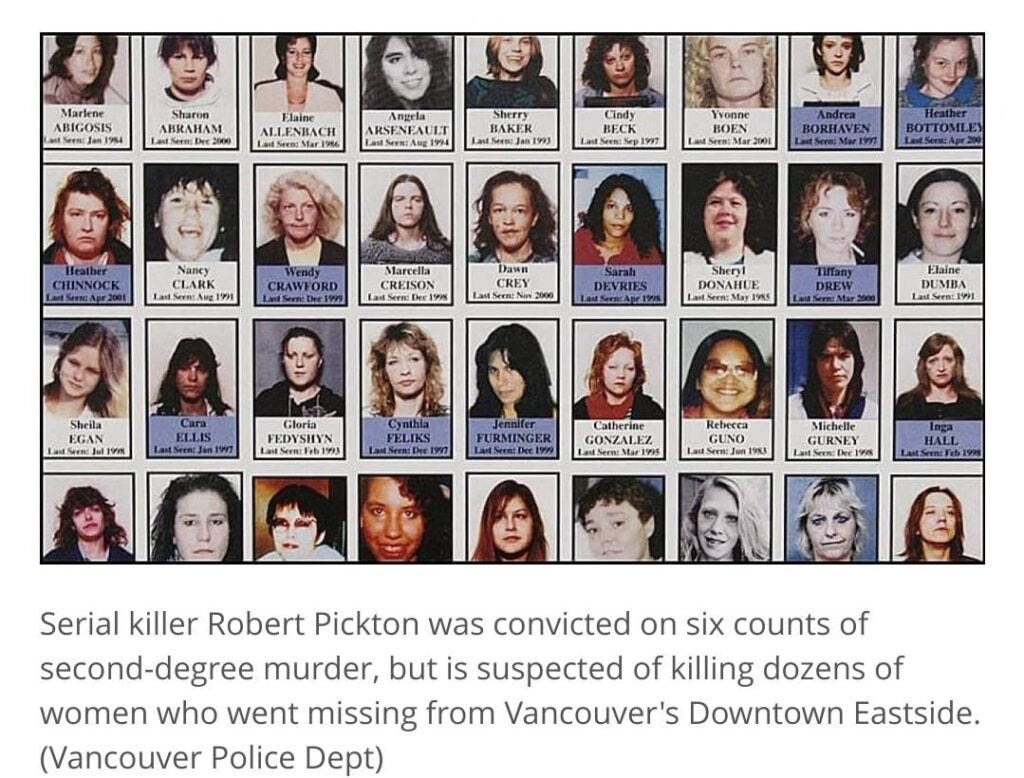


Rabbithole for you. High-up in both RCMP and VPD implicit, and politicians. Look at trafficking and ritual murders. Esp Pickton farm. Know mucky-mucks attending parties. Not to mention names but JT comes to mind.
Vancouver is hell on earth.